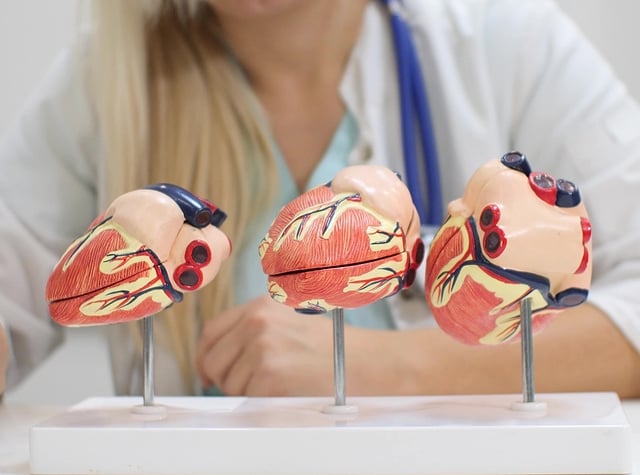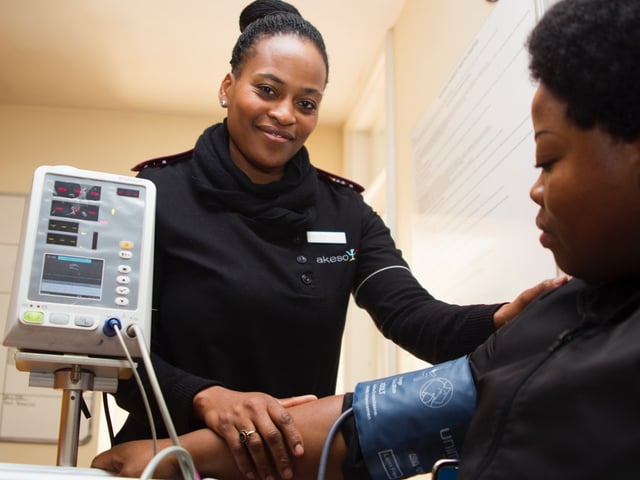
Injections: Angles of Insertion
Considerations
When performing injections, it is vitally important to take into consideration these factors:
- patient size
- injection site
- intended target
- type of injection
These variables determine the injection angle and the depth of injection.
According to the Centers for Disease Control and Prevention (CDC) General Best Practice Guidelines for Immunization, a 1 to 1.5-inch long 22-25 gauge needle should be used for intramuscular (IM) injections and should be delivered at a 90-degree angle either in the deltoid muscle of the upper arm for adults and children age 3 and up, or in the anterolateral aspect of the thigh muscle (vastus lateralis) for infants and toddlers. Bunching the subcutaneous and muscle tissue is recommended for these injections to avoid striking the bone and to make the injection more comfortable for the patient.
Intramuscular (IM) Injection Guidelines
\[\begin{array}{|l|l|l|} \hline \mathbf{Age} & \mathbf{Site} & \mathbf{Needle \;Length\; (22-25 \;gauge)}\\ \hline \text{0-28 days (newborn)} & \text{Anterolateral thigh muscle} & \frac{5}{8}" \\ \hline \text{1-12 months (infant)} & \text{Anterolateral thigh muscle} & 1" \\ \hline \text{1-2 years (toddler)} & \text{Anterolateral thigh muscle} & 1-1\frac{1}{4}" \\ \text{}& \text{Alternate: Deltoid muscle if} & \frac{5}{8}- 1 " \\ \text{}& \text{adequate muscle mass} & \text{} \\ \hline \text{3-10 years (child)} & \text{Deltoid muscle (upper arm)} & \frac{5}{8}- 1 " \\ \text{}& \text{Alternate: Anterolateral} & 1-1\frac{1}{4} \\ \text{}& \text{thigh muscle} & \text{} \\ \hline \text{11 years and older } & \text{Deltoid muscle (upper arm)} & \frac{5}{8}- 1 " \\ \text{(children and adults)}& \text{Alternate: Anterolateral} & 1-1\frac{1}{2} \\ \text{}& \text{thigh muscle} & \text{} \\ \hline \end{array}\]For subcutaneous injections, a \(\mathbf{\frac{5}{8}}\)-inch long 23-25 gauge needle should be used. Injections should be administered at a 45-degree angle, typically into the subcutaneous tissue over the anterolateral aspect of the thigh for infants up to 1 year or the upper outer triceps region for adults and children aged 1 year and older. Alternative sites include the abdomen and buttocks. For repetitive injections, the site of injection should be rotated to avoid lipodystrophy.
Subcutaneous Injection Guidelines
\[\begin{array}{|l|l|l|} \hline \mathbf{Age} & \mathbf{Site} & \mathbf{Needle \; Length \; (23-25\; gauge)}\\ \hline \text{0-1 year} & \text{Fatty tissue over anterolateral} & \frac{5}{8} " \\ \text{} & \text{thigh muscle} & \text{} \\ \hline \text{1 year and older} & \text{Fatty tissue over anterolateral} & \frac{5}{8} " \\ \text{} & \text{thigh muscle} & \text{} \\ \text{}& \text{Fatty tissue over triceps} & \frac{5}{8} " \\ \text{}& \text{Fatty tissue over abdomen} & \frac{5}{8} " \\ \text{}& \text{(requires an adequate} & \text{} \\ \text{}& \text{adipose layer)} & \text{} \\ \text{}& \text{Fatty tissue over buttocks} & \frac{5}{8} " \\ \hline \end{array}\]Appropriate degree of entry, as well as correct needle and site selection, play fundamental roles in the successful and comfortable administration of injections. It is important for healthcare providers to evaluate their patient’s individually specific body composition and select the best needle gauge and length accordingly. Becoming familiar with the various injection techniques and developing a positioning approach that works well for both the patient and healthcare professional promote optimal outcomes.

Keep Reading

Health Education Systems Incorporated Exam Blog
HESI Anatomy and Physiology Review: A Comprehensive Guide
As you prepare for the Health Education Systems, Inc (HESI) Admission A…

Health Education Systems Incorporated Exam Blog
How to Pass the HESI Exam: A Comprehensive Guide to Acing Your Nursing Entrance Exam
If you’re considering becoming a nurse, the HESI exam can be a crucial …

Health Education Systems Incorporated Exam Blog
The Complete Guide to HESI Exam Scores
Are you ready to become a nurse? Many nursing schools require entrance …